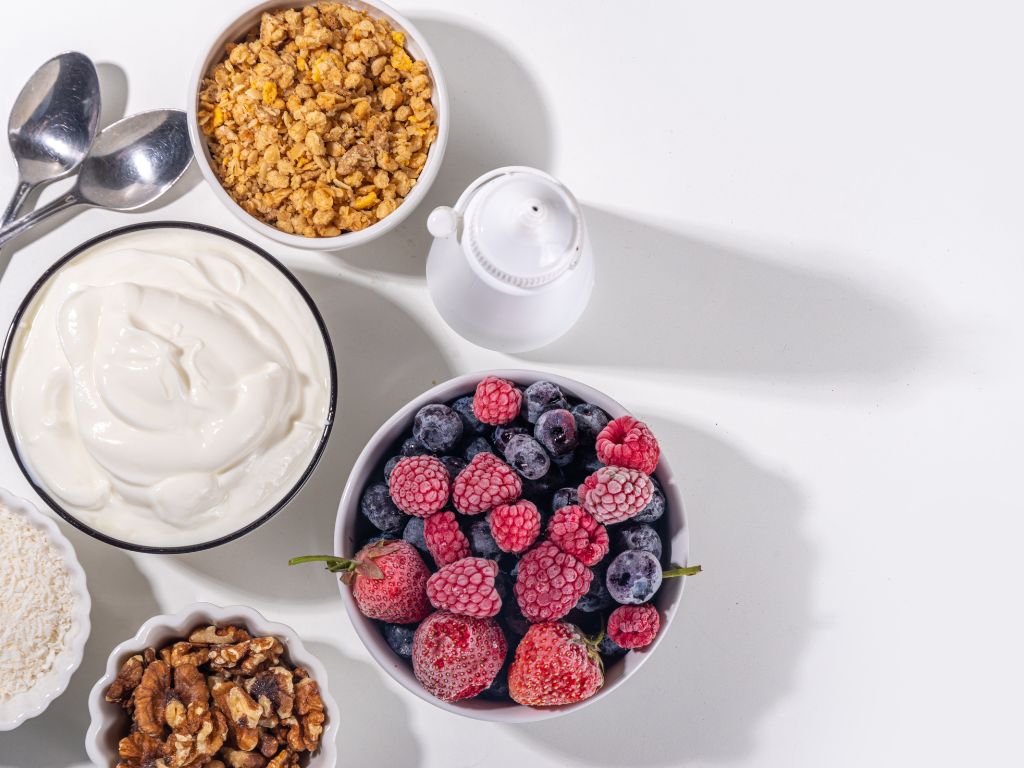What is The Science Behind Making Great Yogurt?

Yogurt has been enjoyed for centuries, but have you ever wondered what makes a batch truly great? The secret lies in a precise balance of science and technique.
From selecting the perfect yogurt starter to controlling fermentation conditions, every step influences the final texture, taste, and nutritional value.
In this article, we’ll break down the science behind yogurt-making and explore how you can craft the perfect batch at home.
The Role of Bacteria in Yogurt Fermentation
At its core, yogurt is the product of bacterial fermentation. The process begins when specific strains of lactic acid bacteria - mainly Lactobacillus bulgaricus and Streptococcus thermophilus - are introduced into milk.
These bacteria consume lactose, the natural sugar in milk, and convert it into lactic acid. This acidification process thickens the milk and gives yogurt its signature tangy flavor.
A high-quality yogurt starter contains these beneficial bacteria in optimal proportions. If the bacteria aren’t balanced, the yogurt may turn out too sour, too runny, or develop an undesirable texture.
That’s why choosing the right yogurt starter is crucial for consistent results.
The Chemistry of Milk Proteins and Yogurt Texture
One of the most noticeable characteristics of yogurt is its creamy, custard-like texture. This transformation happens due to the way lactic acid affects milk proteins, particularly casein.
As the pH level drops, casein proteins begin to coagulate, forming a stable gel network that gives yogurt its firmness.
Temperature also plays a major role in protein behavior. The ideal fermentation temperature for yogurt is between 108°F and 115°F (42°C–46°C).
If the temperature is too low, bacterial activity slows down, resulting in thin, watery yogurt. If it’s too high, proteins can break down too much, leading to a grainy texture.
Choosing the Right Milk for Yogurt Making
The type of milk you use significantly impacts the final product. Whole milk creates a rich, creamy yogurt, while skim milk produces a thinner consistency. Here are a few factors to consider:
- Fat content: Higher fat levels lead to creamier yogurt.
- Protein content: More protein enhances thickness.
- Pasteurization: Ultra-pasteurized milk may not be set properly due to altered proteins.
For best results, use fresh, high-quality milk with a balanced fat and protein content. If you’re using plant-based milk, ensure it contains sufficient protein and calcium for proper fermentation.
How the Yogurt Starter Affects Flavor and Consistency
The type of yogurt starter you use can dramatically alter the final product. Starters can be divided into two main categories:
- Direct-set starters: These are single-use bacterial cultures that provide consistent results but need to be added fresh for each batch.
- Heirloom starters: These contain live, self-propagating bacteria that can be reused indefinitely, creating a more complex flavor profile over time.
If you prefer a milder yogurt, opt for a starter with a lower acid-producing strain. If you enjoy tangy yogurt, look for a blend with more aggressive acidification properties. Experimenting with different yogurt starters allows you to fine-tune the taste and texture to your liking.
Controlling the Fermentation Process
Fermentation is the most critical phase of yogurt making, and proper control over the process ensures success. Here are the key factors to monitor:
- Incubation Time: Yogurt typically ferments for 6 to 12 hours. Longer fermentation leads to a tangier taste.
- pH Level: The target pH for finished yogurt is 4.5, which indicates a balanced acidity.
- Temperature Stability: Using a yogurt maker or an oven with a consistent temperature setting helps maintain optimal fermentation conditions.
The Importance of Post-Fermentation Cooling
Once fermentation is complete, the yogurt must be cooled rapidly to stop bacterial activity and stabilize the texture. Cooling also enhances flavor development by allowing the acidity to mellow slightly.
For best results:
Refrigerate the yogurt for at least 4 to 6 hours before eating.
Stir gently if you prefer a smoother consistency.
Strain through cheesecloth if you want a thicker, Greek-style yogurt.
Common Yogurt-Making Mistakes and How to Avoid Them
Even with careful preparation, things can go wrong. Here are some common issues and their solutions:
Runny Yogurt: Often caused by low fermentation temperature or weak bacterial activity. Solution: Use a fresh yogurt starter and ensure steady heat.
Too Sour: This happens when fermentation runs too long. Solution: Reduce incubation time and test for the desired tartness.
Grainy Texture: Often due to excessive heat or over-processing. Solution: Maintain a stable temperature and avoid excessive stirring.
Off Flavors: Usually caused by contamination or poor-quality milk. Solution: Use fresh, high-quality ingredients and sterilize equipment.
Health Benefits of Homemade Yogurt
Making yogurt at home not only allows for customization but also maximizes health benefits. Homemade yogurt contains:
- Probiotics: Beneficial bacteria that support gut health and digestion.
- High-Quality Protein: Essential for muscle repair and overall wellness.
- Lower Sugar: Unlike store-bought yogurt, homemade versions let you control sweetness and additives.
Additionally, yogurt provides calcium, vitamin B12, and other vital nutrients that support bone and immune health.
Experimenting with Yogurt Varieties
Once you’ve mastered basic yogurt-making, why not experiment with different styles? Here are some variations to try:
- Greek Yogurt: Strained for a thicker, higher-protein consistency.
- Skyr: An Icelandic yogurt with a mild flavor and ultra-thick texture.
- Kefir: A drinkable fermented dairy product rich in probiotics.
- Plant-Based Yogurt: Made from almond, coconut, or soy milk for dairy-free alternatives.
Your Yummy Recipe for Perfect Yogurt
Great yogurt isn’t just about following a recipe. It’s about understanding the science behind it. From selecting the right yogurt starter to controlling fermentation, each step influences the final product’s taste, texture, and nutritional benefits.
By experimenting with different bacterial strains, milk types, and fermentation techniques, you can craft yogurt that perfectly suits your preferences.
With a little practice, you’ll be making top-quality yogurt that rivals the best commercial brands right from your kitchen.